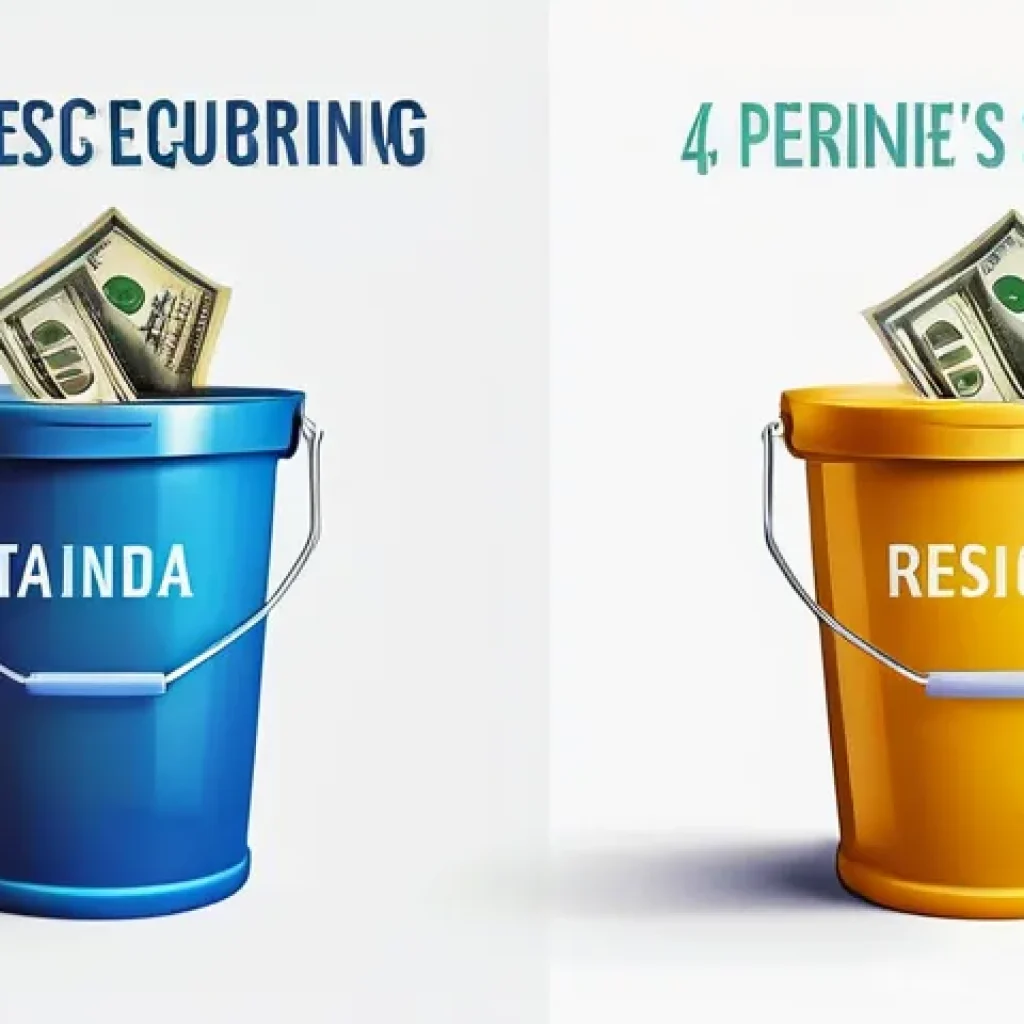Oh boy, navigating retirement taxes can feel like trying to solve a Rubik’s Cube blindfolded, right? I totally get it! We’ve all been there, scratching our heads over tax forms and wondering if we’re leaving money on the table.
It’s not just about what you earned, but how you pull it out and what that means for your overall financial picture. This isn’t just dry tax talk; it’s about securing the future you’ve dreamed of and avoiding those sneaky financial surprises.
The landscape of retirement taxes is always shifting, and with recent changes and proposed adjustments, especially for things like standard deductions, catch-up contributions, and even how Social Security benefits are taxed, staying informed is more crucial than ever.
Many folks think they’ll automatically be in a lower tax bracket once retired, but often, the combination of Social Security, pension income, and Required Minimum Distributions (RMDs) from traditional accounts can push you into higher effective tax rates than you anticipated.
Plus, who wants to stumble into an “IRMAA shock” with higher Medicare premiums because of unexpected income spikes?. Trust me, I’ve seen it happen. My own experience, and what I’ve learned from countless retirees, is that proactive planning makes all the difference.
It’s not about magic, but smart strategies that help you keep more of your hard-earned money. We’re talking about avoiding common pitfalls, like the “Social Security Tax Torpedo” or making costly Roth conversion mistakes.
Every dollar saved from taxes means more for your travels, your hobbies, or even passing on a greater legacy to your loved ones. You’ve worked hard for this chapter of your life, and you deserve to enjoy it without unnecessary tax burdens.
So, let’s cut through the jargon and get to the heart of what truly matters for your retirement finances. We’ll explore the latest insights, practical tips, and strategies that real people are using to optimize their retirement income and keep their tax bill in check, making sure you’re empowered to make the best decisions for *your* unique situation.
We’re going to dive deep into how to calculate your retirement income tax accurately and smartly.
Unpacking Your Retirement Income: Where Does It All Come From?

Navigating Diverse Income Streams
Okay, so let’s talk about where all that retirement dough actually comes from. It’s rarely just one pot, right? For most of us, it’s a mix and match of Social Security benefits, income from traditional IRAs or 401(k)s, perhaps a pension (if you’re lucky enough to have one!), and maybe even some rental income or dividends from a brokerage account. What I’ve seen time and again is that people often focus on the gross amount of these incomes, but totally overlook how each source is treated differently for tax purposes. It’s like having a basket of apples, oranges, and bananas, but trying to weigh them all as if they’re the same. Each fruit has its own texture, sweetness, and yes, its own tax bite! This is where things can get a little tricky because understanding these distinctions is your first line of defense against an unexpectedly high tax bill.
I remember chatting with a client, Sarah, who was thrilled to be pulling out a decent chunk from her 401(k) and Social Security. She thought she was all set. But we quickly realized that her combined income pushed a significant portion of her Social Security benefits into the taxable realm, something she hadn’t even considered. It totally changed her projected budget! So, before you even think about spending, you’ve got to get a clear picture of each income stream and its potential tax implications. This includes things like interest from savings, dividends from investments, and even distributions from annuities. My rule of thumb? Don’t assume anything is tax-free until you’ve verified it, because the IRS has a way of finding everything.
Taming the Social Security Tax Beast
Understanding the Provisional Income Puzzle
Ah, Social Security. For many, it’s a foundational piece of their retirement puzzle. But here’s the kicker that catches so many folks off guard: your Social Security benefits might actually be taxable! I’ve seen countless jaws drop when I explain this. It’s not a simple yes or no; it depends on what the IRS calls your “provisional income.” This isn’t just your Social Security; it’s a calculation that includes half of your Social Security benefits, plus your adjusted gross income (AGI), plus any tax-exempt interest you might have. If that provisional income crosses certain thresholds – $25,000 for single filers and $32,000 for those married filing jointly – then anywhere from 50% to 85% of your Social Security benefits become taxable. It’s a classic example of how seemingly small details can have a huge impact on your bottom line.
My own experience, and what I’ve learned from countless retirees, is that proactively managing your other income sources can be a game-changer here. For instance, if you’re able to draw more heavily from Roth accounts or even delay taking Social Security for a bit, you might be able to keep your provisional income below those thresholds. It’s not just about what you earn, but when and how you earn it in retirement. I’ve worked with couples who strategically timed their Roth conversions in years they knew their provisional income would be lower, effectively shielding more of their Social Security from taxes later on. It truly makes a tangible difference, saving thousands over the years. It’s like playing chess with your finances, anticipating moves to protect your most valuable pieces.
The Roth Conversion Conundrum: A Strategic Move or a Costly Blunder?
Weighing the Benefits of a Roth IRA
Roth conversions, oh boy, these can be a total lifesaver or a giant headache depending on how you play them. Converting funds from a traditional IRA or 401(k) to a Roth IRA means you pay taxes on that converted amount now, hoping that future withdrawals in retirement will be completely tax-free. On the surface, it sounds brilliant, right? Pay the piper now, and enjoy tax-free income later. And it often is brilliant! Especially if you anticipate being in a higher tax bracket in retirement than you are today, or if you want to leave a tax-free legacy to your heirs. I’ve personally guided clients through successful Roth conversions that have saved them hundreds of thousands in taxes over their lifetimes. It’s truly empowering to know that money you’re pulling out for a dream vacation or an emergency won’t be chipped away by the taxman.
However, and this is a big “however,” if you’re not careful, a Roth conversion can backfire. You might inadvertently push yourself into a higher tax bracket for the year of the conversion, triggering a larger tax bill than you anticipated. This is especially true if you do a large conversion without considering other income or deductions. I once had a client, David, who was so excited about the idea of tax-free income that he converted a massive amount in one go, without realizing it would trigger higher Medicare premiums (hello, IRMAA!) for the next two years and significantly increase his current-year tax liability. It was a costly lesson for him. The key is to run the numbers, consider your current and future tax brackets, and perhaps even spread conversions over several years to manage the tax hit. It’s not a one-size-fits-all solution; it requires careful, personalized planning.
Navigating Required Minimum Distributions (RMDs) with Finesse
Understanding the Rules and Avoiding Penalties
Required Minimum Distributions (RMDs) are those mandatory withdrawals the IRS insists you take from your traditional IRAs, 401(k)s, and other employer-sponsored retirement plans once you hit a certain age. And let me tell you, overlooking these can be incredibly costly! The penalty for failing to take an RMD, or taking too little, is a whopping 25% of the amount you *should* have withdrawn. Ouch! The age for RMDs shifted recently with the SECURE Act 2.0, first to 73, and then to 75 in 2033. It’s easy to get these dates mixed up, which is why staying on top of the latest rules is absolutely critical. I remember a client who almost missed their RMD because they were convinced their age was still 72, not realizing the new 73-year-old threshold now applied to them. We caught it just in time, but it was a close call that could have cost them a pretty penny.
The trick with RMDs isn’t just taking them, it’s taking them smartly. They add to your taxable income, potentially pushing you into a higher tax bracket and impacting other areas like Social Security taxation or Medicare premiums. One strategy I’ve seen work wonders is the Qualified Charitable Distribution (QCD). If you’re 70½ or older, you can send up to $105,000 directly from your IRA to a qualified charity. This distribution counts towards your RMD but isn’t included in your adjusted gross income, effectively lowering your taxable income. It’s a fantastic way to fulfill your charitable giving goals while simultaneously reducing your tax burden. I’ve always told my clients: think of RMDs not as a burden, but as an opportunity to strategically manage your tax picture. Don’t just take the money; plan how it impacts everything else.
Dodging the IRMAA Shock: Medicare Premiums and Income Thresholds
Preventing Unexpected Medicare Surcharges
Okay, let’s talk about something that can totally sneak up on you: IRMAA, or the Income-Related Monthly Adjustment Amount. This is where your Medicare Part B and Part D premiums can actually go up if your income crosses certain thresholds. It’s based on your modified adjusted gross income (MAGI) from two years prior. So, if you had a big income spike, say from a large Roth conversion or selling an asset, in 2023, you could see higher Medicare premiums in 2025. I’ve seen the look of utter surprise and frustration on people’s faces when they get that letter from Social Security informing them of an IRMAA surcharge. It feels like a punishment for having done well, and it can add hundreds, sometimes thousands, of dollars to your annual healthcare costs.
This is precisely why foresight is so crucial in retirement planning. Understanding the IRMAA thresholds and how different income sources impact your MAGI is paramount. For example, tax-free income from Roth IRAs doesn’t count towards MAGI for IRMAA purposes, making Roth conversions even more appealing for those looking to manage future healthcare costs. On the other hand, distributions from traditional IRAs and 401(k)s, taxable Social Security benefits, and capital gains all contribute to your MAGI. I always encourage my clients to project their income two years out, especially if they’re considering significant financial moves like selling a property or doing a large Roth conversion. You want to avoid those “IRMAA cliffs” where a dollar over the threshold can mean a significant jump in premiums. Trust me, a little planning here goes a long way in keeping more money in your pocket.
Smart Withdrawal Strategies: Making Your Money Last Longer
Optimizing Your Retirement Account Withdrawals

Alright, so we’ve talked about where your money comes from and some of the tax traps. Now, let’s get proactive and discuss how you actually *take* that money out. This is where strategic withdrawal planning truly shines. You’ve got different types of accounts – taxable brokerage accounts, tax-deferred accounts (like traditional IRAs/401(k)s), and tax-free accounts (like Roth IRAs). The order in which you tap into these can drastically impact your overall tax liability and how long your money lasts. I’ve found that many people just instinctively go for whatever is easiest, but that’s often the most expensive approach. Instead, imagine you have three wells: one with clean, taxed water; one with water you’ll pay tax on later; and one with water you paid tax on upfront, so it’s free to drink. You wouldn’t just haphazardly pull from one without thinking about the others, would you?
| Account Type | Contributions | Growth | Withdrawals in Retirement | Beneficiary Treatment |
|---|---|---|---|---|
| Traditional IRA/401(k) | Tax-deductible | Tax-deferred | Taxable (RMDs apply) | Taxable (10-year rule often applies) |
| Roth IRA/401(k) | After-tax | Tax-free | Tax-free (no RMDs for original owner) | Tax-free (10-year rule often applies) |
| Taxable Brokerage | After-tax | Taxable (capital gains, dividends) | Taxable (basis returned tax-free) | Basis step-up at death |
A common strategy I advocate for is the “tax diversification” approach. This often means trying to keep your taxable income low in early retirement by withdrawing from taxable brokerage accounts first, then strategically using Roth accounts to fill income gaps without triggering higher tax brackets or IRMAA. Later, when RMDs kick in from your tax-deferred accounts, you’ll have more flexibility. Another fantastic tip: consider the “tax bracket filling” strategy. If you’re in a low tax bracket for a given year – maybe you had lower income, or significant deductions – that could be the perfect year to do a small Roth conversion. You’re essentially filling up your current low tax bracket with income that will be tax-free forever. This isn’t just theory; I’ve seen firsthand how clients who meticulously plan their withdrawals save tens of thousands of dollars over their retirement years compared to those who just pull money out without a strategy. It really feels like you’re getting a bonus every single year.
Tax-Efficient Estate Planning and Beneficiary Designations
Ensuring Your Legacy Is Protected From Unnecessary Taxes
While nobody likes to think about it, planning for what happens to your assets after you’re gone is a crucial part of retirement tax strategy. And trust me, the IRS has rules here too! Proper beneficiary designations on your retirement accounts are absolutely critical, yet they’re often overlooked or outdated. Naming the right beneficiary can mean the difference between your heirs receiving a tax-efficient inheritance versus a substantial chunk going to taxes. For instance, leaving a traditional IRA to an individual who then has to take RMDs for ten years (under the SECURE Act 2.0) is very different from leaving a Roth IRA, which allows for tax-free distributions to beneficiaries. I’ve seen heartbreaking situations where outdated beneficiaries meant money went to the wrong person, or worse, through probate, incurring huge costs and delays.
The difference between “Stretch IRAs” (mostly gone now) and the new 10-year rule for many inherited IRAs has dramatically changed how beneficiaries receive funds. Under the 10-year rule, most non-spouse beneficiaries must empty the inherited IRA within ten years, meaning larger taxable distributions over a shorter period. This can push beneficiaries into higher tax brackets. This is why considering things like Roth conversions before you pass away can be a huge gift to your heirs – they inherit a tax-free income stream. It’s also worth exploring trusts, but that’s a whole different ballgame and definitely requires professional legal and tax advice. The main takeaway here is: don’t just set it and forget it! Regularly review your beneficiary designations, understand the implications of different account types, and consider how your legacy will be taxed. It’s about ensuring your hard-earned money continues to support your loved ones, not just Uncle Sam.
Wrapping Things Up
Whew, we’ve covered quite a bit today, haven’t we? It’s easy to feel a little overwhelmed by all the rules, thresholds, and strategic moves involved in retirement income planning. But honestly, the biggest takeaway I want you to have is this: it’s not about being perfect, it’s about being prepared. Your retirement journey isn’t a single, static destination; it’s a dynamic landscape that evolves as you do. The financial world shifts, tax laws change, and your personal needs and goals will certainly adapt over time. That’s why flexibility, curiosity, and a proactive mindset are your absolute best allies. I’ve witnessed countless times how just a little bit of thoughtful planning and consistent attention can transform what seems like a complex maze into a clear, manageable path, leading to so much more peace of mind. It truly frees you up to enjoy those golden years, knowing your finances are working as hard as you did to earn them.
Useful Information to Keep in Your Back Pocket
Here are a few extra nuggets of wisdom I’ve picked up over the years that I think you’ll find incredibly helpful as you navigate your own retirement income journey:
1.
Consider Professional Guidance
While this article gives you a solid foundation, remember that everyone’s situation is unique. What works perfectly for one person might not be the best fit for another. I’ve seen clients gain so much clarity and confidence by working with a fee-only financial advisor who specializes in retirement planning. They can help you craft a personalized strategy, project your tax liabilities, and identify opportunities you might otherwise miss. Think of them as your personal financial GPS, guiding you through the intricate routes of retirement. It’s an investment that often pays for itself many times over in saved taxes and optimized income.
2.
Regularly Review Your Plan
Don’t just set your retirement plan and forget it! Life happens – market conditions change, new tax laws emerge, and your own health or family circumstances might evolve. I always encourage my clients to schedule an annual review of their retirement income strategy. This isn’t just about tweaking numbers; it’s about ensuring your plan remains aligned with your goals and the current financial environment. Catching potential issues early or capitalizing on new opportunities can make a world of difference, preventing small deviations from turning into big problems down the line.
3.
Factor in Healthcare Costs Beyond Premiums
We talked about IRMAA, which is crucial, but remember that Medicare premiums are just one piece of the healthcare puzzle. There are deductibles, co-pays, prescription drug costs, and potential long-term care expenses that Medicare typically doesn’t cover. I’ve seen many retirees underestimate this significant category, only to find their budget strained. Proactively planning for these out-of-pocket costs, perhaps by building a dedicated health savings account (HSA) or a separate emergency fund, is a game-changer. It’s about building a robust financial fortress, not just a wall, around your retirement health needs.
4.
Understand State-Specific Tax Rules
While federal taxes are a big chunk of the conversation, don’t forget that your state of residence can also have a major impact on your retirement income. Some states don’t tax Social Security benefits, while others might tax pension income or even have no state income tax at all. If you’re considering relocating in retirement, researching these state-specific tax laws can be incredibly beneficial. I’ve known couples who strategically moved to a more tax-friendly state and saw their disposable income jump significantly, allowing them to stretch their savings further and enjoy a higher quality of life.
5.
Build in Flexibility and an Emergency Fund
Life throws curveballs, even in retirement. Unexpected expenses, market downturns, or unforeseen events can disrupt even the best-laid plans. This is why maintaining a robust emergency fund – typically 6-12 months of living expenses – is absolutely non-negotiable. Furthermore, building flexibility into your withdrawal strategy, perhaps by having a “cash cushion” in a low-risk account, can provide peace of mind during volatile times. It allows you to avoid selling investments when the market is down and gives you breathing room to adjust your strategy as needed, ensuring your financial security through thick and thin.
Key Takeaways for a Savvy Retirement
Alright, let’s boil down the essence of what we’ve discussed today into some actionable key points. Navigating retirement income is all about being smart, strategic, and staying one step ahead.
First and foremost, embrace tax diversification. Think of your investment portfolio not just as a collection of assets, but as a mix of taxable, tax-deferred, and tax-free accounts. Strategically pulling from these different buckets allows you to manage your annual income, control your tax bracket, and ultimately keep more of your hard-earned money. This isn’t just theory; it’s a strategy that can save you thousands throughout your retirement years, making a tangible difference in your daily life.
Next, get proactive with your Required Minimum Distributions (RMDs). Don’t view them as a burden, but as an opportunity. Explore options like Qualified Charitable Distributions (QCDs) if you’re charitably inclined, as these can satisfy your RMD while reducing your taxable income. Being mindful of RMDs helps you avoid hefty penalties and gives you a chance to integrate them into your broader tax strategy, rather than just reacting to them.
Crucially, be vigilant about IRMAA (Income-Related Monthly Adjustment Amount). Your income from two years prior can significantly impact your Medicare Part B and D premiums. This means that big financial moves, like substantial Roth conversions or capital gains, need to be carefully timed. Projecting your income and understanding these thresholds can help you avoid unexpected surcharges, saving you hundreds or even thousands of dollars annually on healthcare costs.
Finally, never underestimate the power of regular reviews and proper beneficiary designations. Your financial situation is not static, and neither are tax laws. Regularly checking in on your plan and ensuring your beneficiaries are up-to-date can prevent costly errors and ensure your legacy is distributed according to your wishes, protecting your loved ones from unnecessary taxes and complications. This consistent attention is what truly secures your financial future and allows you to enjoy the retirement you’ve worked so hard for.
Frequently Asked Questions (FAQ) 📖
Q: What exactly counts as “income” for tax purposes in retirement, and why does it feel so much more complicated than when I was working?
A: Oh boy, I hear this question all the time, and for good reason! It really does feel like a whole new ballgame once you’re retired, doesn’t it? When you were working, income was pretty straightforward – your paycheck, maybe some bonuses.
But in retirement, it’s like a mosaic of different pieces, each with its own tax rules. From my experience, the biggest contributors to taxable income for most retirees come from a few key areas.
First up, you’ve got your traditional 401(k)s and IRAs. Every penny you pull out of those, including those Required Minimum Distributions (RMDs) that kick in at a certain age, is usually taxed as ordinary income.
Then there are pensions; those are almost always fully taxable. And don’t forget your Social Security benefits! This is where it gets tricky – a portion of your Social Security can become taxable depending on your “provisional income,” which is a fancy term for your adjusted gross income plus any tax-exempt interest and half of your Social Security benefits.
Many folks are surprised to find that up to 85% of their Social Security could be taxed! Beyond those, you’ll also see income from investments: dividends from stocks, interest from bonds, and capital gains when you sell assets at a profit.
Even if you’ve got a side gig or rental properties, that income adds to the mix. What makes it all so complex, I think, is that these different income streams don’t just add up; they can actually influence each other’s taxability.
For example, higher income from your IRA withdrawals can push more of your Social Security benefits into the taxable bracket. It’s truly a dance, and understanding each step is crucial.
My advice? Don’t assume anything; actually sit down and map out all your income sources. It’s an eye-opener!
Q: I’ve heard whispers about the “Social Security Tax Torpedo” and “IRM
A: A shocks.” How can I proactively avoid these nasty surprises and keep my retirement tax bill from spiraling out of control? A2: This is a fantastic question, and trust me, avoiding these “shocks” is absolutely paramount for a comfortable retirement.
I’ve seen firsthand how unexpected tax hits can really derail someone’s carefully laid plans. The “Social Security Tax Torpedo” is that phenomenon where seemingly small increases in your other income can trigger a much larger portion of your Social Security benefits to become taxable, leading to a surprisingly high effective tax rate on those additional dollars.
It feels like you’re losing more than you gained, right? Then there’s the IRMAA (Income-Related Monthly Adjustment Amount) for Medicare Part B and Part D premiums.
This is a real kicker! If your Modified Adjusted Gross Income (MAGI) crosses certain thresholds, your Medicare premiums can jump significantly, sometimes by hundreds of dollars a month.
And what’s particularly sneaky is that the IRMAA is based on your income from two years prior, so a high-income year like a big Roth conversion or selling a property can lead to a premium hike long after the money is spent.
So, how do you steer clear? The key is proactive planning and managing your taxable income. One of my favorite strategies is strategic Roth conversions.
If you’re in a lower tax bracket now (maybe before Social Security or RMDs kick in), converting some traditional IRA money to a Roth can be incredibly powerful.
You pay the tax now, at a potentially lower rate, and then those Roth withdrawals are tax-free forever, reducing your future taxable income and helping you avoid the torpedo and IRMAA.
Also, consider Qualified Charitable Distributions (QCDs) from your IRA if you’re charitably inclined and over 70½. This money goes directly to charity, satisfies RMDs, and isn’t included in your taxable income.
For your investment portfolio, judicious tax-loss harvesting can offset capital gains, reducing your overall taxable income. It’s all about looking ahead and orchestrating your income to stay below those critical thresholds.
Q: With all these different accounts – 401(k)s, IR
A: s, Roths, taxable brokerage accounts – what’s the smartest way to decide which money to pull out when to minimize taxes? A3: This is where the art and science of retirement tax planning truly merge!
Deciding where to pull your money from and when is one of the most impactful financial decisions you’ll make in retirement. There’s no one-size-fits-all answer, but generally, I’ve found that a “tax diversification” strategy, often called the “bucket strategy,” works wonders.
It’s about having money in different types of accounts – tax-deferred (like traditional IRAs/401(k)s), tax-free (Roth IRAs/401(k)s), and taxable (brokerage accounts) – so you have flexibility.
My personal approach, and what I’ve seen yield great results for others, often involves a carefully planned withdrawal sequence. In years when you anticipate being in a lower tax bracket, you might consider drawing more heavily from your tax-deferred accounts (traditional IRAs/401(k)s) or even initiating a Roth conversion to fill up that lower bracket.
The goal is to pay tax on that money at the lowest possible rate. In contrast, if you face a year with higher-than-expected expenses or need a significant sum, you might lean on your taxable brokerage accounts first, especially if you have investments with a high cost basis that would result in minimal capital gains, or even better, some tax-loss harvesting opportunities.
Your Roth accounts are your superstar players, the tax-free golden goose. Many strategists, myself included, advocate for saving these for later in retirement.
Why? Because as you get older, especially once RMDs kick in, your taxable income might naturally rise. Having a Roth account to draw from means you can access money completely tax-free, without impacting your MAGI or provisional income, thus helping to manage those IRMAA and Social Security tax thresholds.
It’s like having a secret weapon against rising taxes. Ultimately, it’s about balancing your current tax bracket with your future estimated brackets and having the flexibility to respond to changes in tax law or your personal circumstances.
It’s a dynamic plan, not a static one!






